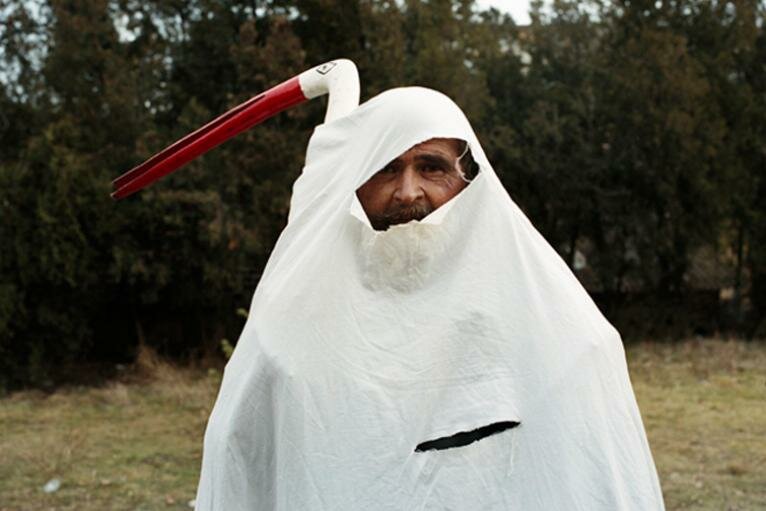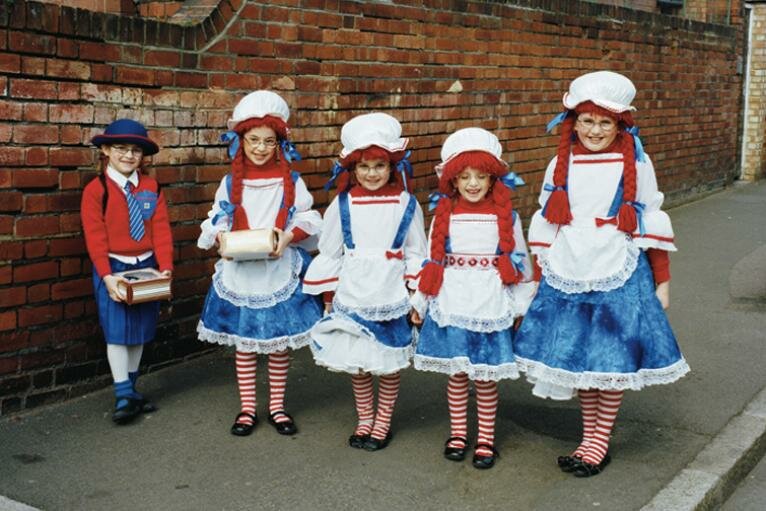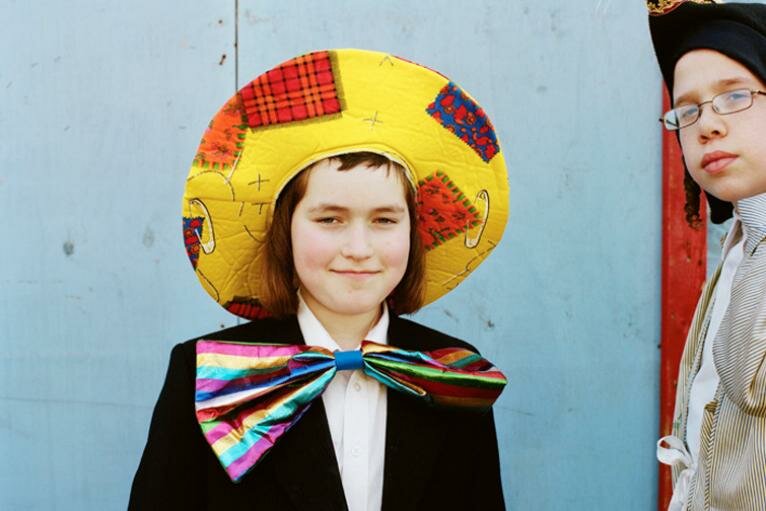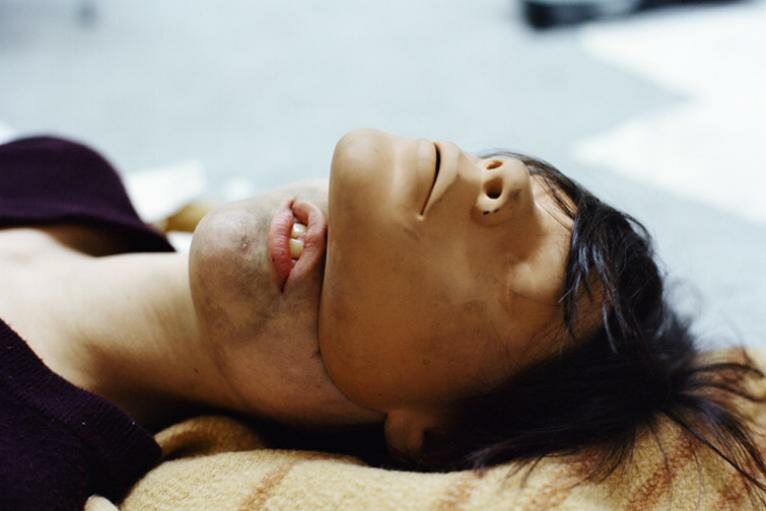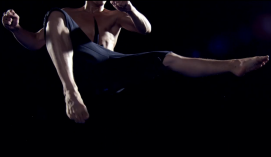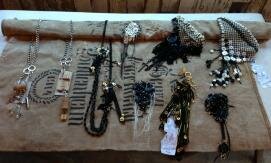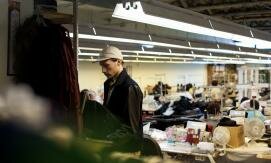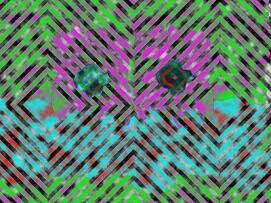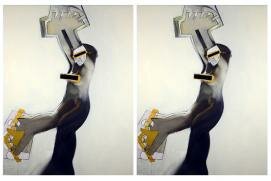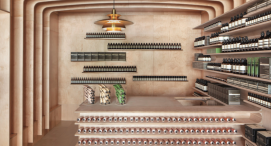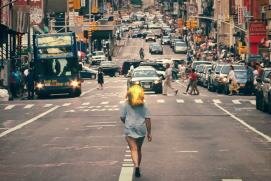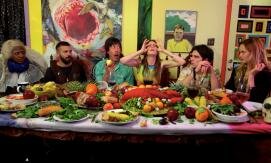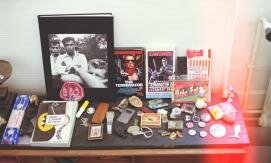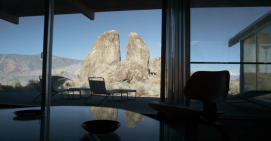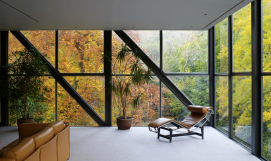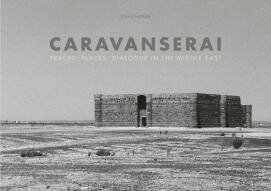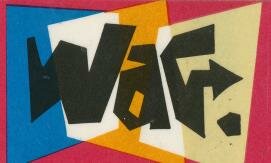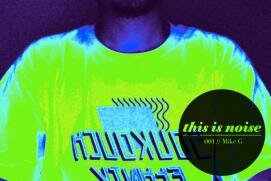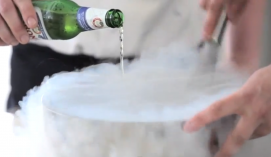- 1
- 2
- next ›
- last »
Estelle Hanania's large-scale color prints challenge, intrigue and ultimately entertain the viewer. Her works gained acclaim a mere month after graduating from art school in Paris with Estelle winning the 2006 Hyères prize. Estelle has also had her pick of brands and media scrambling to work with her including Vice, Maison Martin Margiela, Sang Bleu, Opening Ceremony and Issey Miyake. We spoke with Estelle about her latest exhibition Hanania & Brunnquell, the future of photography publications and collaborating.
Megan Christiansen: Can you tell me a little bit about your childhood? Did you always want to take pictures?
Estelle Hanania: My childhood was filled by creative activities, my mom used to paint little naive scenes of children playing games or romantic empty gardens and my twin sister Marion and I were totally fascinated by them. We use to draw a lot. I had a fetish for notebooks and paper by then and still do. A new notebook was for me a big moment, especially the first right page when I could push the pencil heavily on the depth of the paper. I started to learn photography at school when I was around 12 years old.
MC: How do your graphic design, art direction and fine art backgrounds effect or influence your photography?
EH: These different backgrounds were all photography related, when i studied graphic design I used photographs in the lay out, when I was doing art direction for an advertising agency, I ordered portfolios of photographers to try to apply their work to our campaigns etc. So it has given me a wide perspective on what photography can be. I would say I'm not just interested in shooting the images but I always have in mind the way I want to organize them, the order, the narrative aspect of the editing and it comes from these various backgrounds I guess.
MC: What drove the step into photography?
EH: Fine arts was a great school to get access to the best photo equipment and studio, I could experiment there, started to print my color photographs, but it didn't help me to step into photography at all. The school was a great tool but I didn't find motivation there. In 2006, right after I had my degree I won the Hyères photo prize which was a good spotlight on my work.
MC: Can you describe the feeling you get when you see something which is image worthy? Are there characteristics that make a subject more interesting to you?
EH: In photography I have very various tastes, I'm very into documentary imagery, street photography, amateur imagery any real world depicted in a sincere way…I'm naturally attracted by color photography, it has a very strong power on me. I have very few b&w photo books, I think the b&w gives too much distance, it seems to me there is already a nostalgia about what photography is and i'm not into nostalgia at all. Actually I think nostalgia is a dead end for any image maker. But I would say I don't know what a good subject is, a good subject doesn't make a good photo and a photo can be striking with no subject at all.
MC: Your work never fails to have a strong narrative undertone. Where do the stories come from?
EH: I'm drawn to photographic subjects which contain an ambiguity, a mystery which you want to discover. I've always been convinced that I was a bad story teller when I speak to someone, it takes me ages to arrive to the point. In fact I think I'm much more efficient with photographs. Editing is the best part, it reveals the narrative but yet it keeps a total mystery.
MC: What comments do you make about the human form and costume through your work?
EH: The human body is my main subject indeed, either disguised, covered up, bare, inanimate It is an endless source of inspiration. I have a twin sister, and the more I grow up the more I think a lot of things are related to this fact of being two people who grow together and observe themselves. Two identities struggling to be different and nevertheless closer than anyone can be. I think this body obsession is maybe an identity quest, for the unique and particular.
MC: Tell us a little bit about Hanania & Brunnquell, the ideas behind it and how the exhibition came to be?
EH: Hanania & Brunnquell is a world on its own, independent from my work or Christophe's production but linked in many ways though. We produce photo sessions with models I cast, Christophe prepares some props and ideas. All is based on improvisation. The idea behind it is to produce images from exhaustion, enthusiasm, glee and the most important thing for us is to surprise us when we shoot. We're looking for something we don't really know and most of the time we find it while we shoot. Each shoot is a treasure hunt and when we're lucky we find one little treasure or more after a few hours of work.
MC: Can you tell us a little bit about how you started working with Christophe Brunnquell? What is your working relationship like?
EH: We were asked to collaborate for Sang Bleu Magazine in 2008, during a workshop in Berlin, and it was the beginning of our "duo". The first time we worked together it was so simple and natural for both of us, we were happy that we found each other. We have different kind of energies which combine very well, and we are both obsessed by work, production, creation and the idea that something even better is still waiting for us in the next shoot.
MC: How do you feel about the collaborative process more broadly? Is it something you think enhances your work?
EH: I'm very into collaborations, I'm fascinated by the OTHER, I need him to express myself and eventually give clue of who I am really. I consider almost all of my photos series as collaborations. Dondoro is a collaboration with japanese puppeteer Hoichi Okamoto, I've been working for a few years with choreographer, puppeteer, director Gisèle Vienne now. Attila was a series I shot with Attila Csihar an amazing singer and Christophe Brunnquell of course.
MC: Is there a dream person you would like to work with?
EH: So many. It could be a fashion designer, a sad clown, a dancer, a craftsman or any inspiring people. For example right now I'm totally bewitched by a young model I found. She's an art student and she's the perfect "envelop" for a project I start. She's actually the one who inspired me the project.
MC: What is coming up next for you? Will we see another book from you soon?
EH: Various commissioned projects and personal series, It's been a productive and inspiring year. Yes i'm working on a book project for 2013 with Shelter press (a Brussel based publishing company) gathering my works from 2007 until now about the winter traditions I photographed, Demoniac Babble, Parking Lot Hydra and more images. I'm very excited about that.
MC: Do you think that presenting bodies of work in book-form has the same impact now with the recent power of the internet and blogs? Do you think it is still an important media?
EH: Oh yes books is a very special media which is not vanishing at all to my opinion. You must have noticed all the art book fairs, the book awards, the blogs and websites about books. A book is a very special place for photographers where you can display your work in a very intimate way and have a private dialogue with the viewer. It has a physical presence you can't deny, it takes space, it has weight and it smells good when it's just printed. I definitely think a screen cannot replace the paper. Internet has an endless capacity, it's a huge source of archives everybody can own. Interesting and efficient and quick but owning a book is less passive than flicking through tons of tumblrs.
MC: Finally, what would you be doing if you weren't taking pictures?
EH: Something that takes me out of reality, out of any kind of daily routine. Something that would make me travel a lot, go to remote places and meet incredible people. Or if I could turn back time and be in someone else's skin I would love to be the costume and set designer for Fellini!
Megan Christiansen
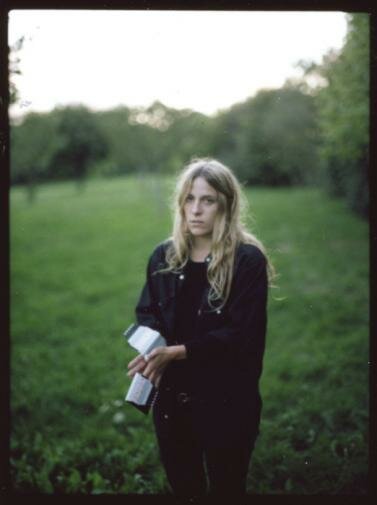
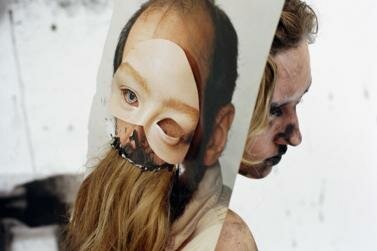
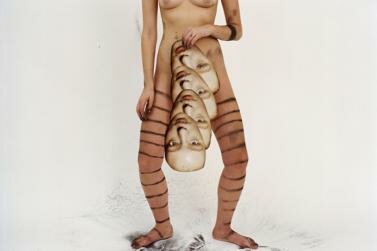
end








